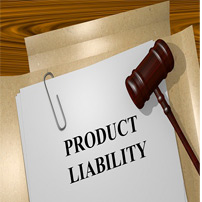Are Loft Beds Safe? Study Says No
November 9, 2017 Loft beds, also commonly known as bunk beds, are popular among families and are installed in college dorms, military academies, fraternities and sororities across the country. However, data and reports consistently show that loft beds can be inherently dangerous for kids as well as young adults.
Loft beds, also commonly known as bunk beds, are popular among families and are installed in college dorms, military academies, fraternities and sororities across the country. However, data and reports consistently show that loft beds can be inherently dangerous for kids as well as young adults.
According to a study conducted by the Nationwide Children’s Hospital (NCH), between 1990 and 2005 a staggering 572,580 children and adolescents went to emergency departments to receive medical care for bunk bed-related injuries. The majority of these injuries happened at home (over 90%) and 72% were the result of falls. When you break the NCH’s number down into an annual one, approximately 36,000 teens and kids are treated in ERs every year after bunk bed injuries.
Other common causes of the injuries related to bunk or loft beds include striking or hitting the furniture, product defects or malfunctions, entrapment and ladder-related injuries. Children and young adults are most likely to experience concussions, upper-extremity bone breaks, other types of head and neck injuries, bruises, scrapes, lacerations and cuts from bunk bed-related injuries, although fatalities are also possible.
The NCH reports that when children or teenagers experience bunk bed-related injuries that they are often more severe than any injury caused from standard beds. This is particularly concerning, since the most common injuries inflicted by bunk and loft-style beds are head and neck ones. Recently a young woman in New York City died after she fell off her loft bed – she sustained serious head injuries from her fall. An 11-year-old girl died when she fell from the top bunk and became entangled in the sheets. These types of injuries and deaths are unacceptable; no one should have to fear for their life when getting in and out of bed.
Various bunk bed models have been recalled for creating consumer hazards over the years. PBTeen and Big Lots are just two examples of distributors who complied with pulling their products from the market – in these cases, the bunk bed units had defects that could lead to the furniture cracking and breaking apart or creating fall risks for consumers.
The Consumer Product Safety Commission (CPSC) decided to begin regulating bunk bed safety for adults and children alike back in 1999. The commission did this to combat its estimated rate of child fatalities (10 per year) along with thousands of preventable injuries. A few examples of the federal safety requirements from the CPSC include:
- Openings on the bunk bed’s lower structure must be small enough to prevent entry from a child’s head and torso OR large enough to allow a child’s head and torso to travel through freely;
- Openings on the bunk bed’s higher structure (or “top bunk” area) must be small enough to prevent a child’s torso from becoming entrapped;
- If the foundation is more than 30 inches above the floor, the bed must have guardrails installed on both sides – and the rail on the wall-side must be continuous;
- Every bed must have a label identifying the manufacturer, seller or distributor, model number and the date of manufacture, and:
- There must be warning signs and labels on the product
Feel free to read all of the CPSC’s safety regulations for bunk beds.
It is important for parents and caregivers to be aware of the dangers that children and young adults face simply from using loft-style beds. Due to these hazards, the American Academy of Pediatrics (AAP) recommends that children under 6-years-old don’t use the top bunk. The academy offers some other safety tips, which could be helpful for young adults as well:
- Make sure the ladder is secured and will not slip or fall;
- Place bunk beds in the corner of a room so that it is against two walls;
- Consider adding extra slats underneath the top bunk’s mattress to prevent it from falling;
- Place a night light near the bed;
- Remove dangerous objects from the area surrounding the bed, and:
- Don’t hang any objects such as belts, scarves or ropes near the bunk bed, because these can create strangulation risks
Even though the CPSC regulates loft and bunk-style bed safety, distributors sometimes fail to ensure that the beds are designed in a way that reasonably prevents consumer injuries. If you are worried that you may own a recalled bunk bed or want to stay on top of consumer updates on product safety, you can visit the Consumer Product Safety Commission.
Allentown Product Liability Lawyers at Galfand Berger, LLP Representing Injured Individuals Since 1947
If your child sustained serious or fatal injuries as a result of falling out of a window, please contact our Allentown product liability lawyers. With offices located in Philadelphia, Bethlehem, Reading, and Lancaster, we serve clients throughout Pennsylvania and New Jersey. To schedule a consultation with Galfand Berger, call us at 800-222-8792 or complete our online contact form.
 Google Screened
Google Screened
